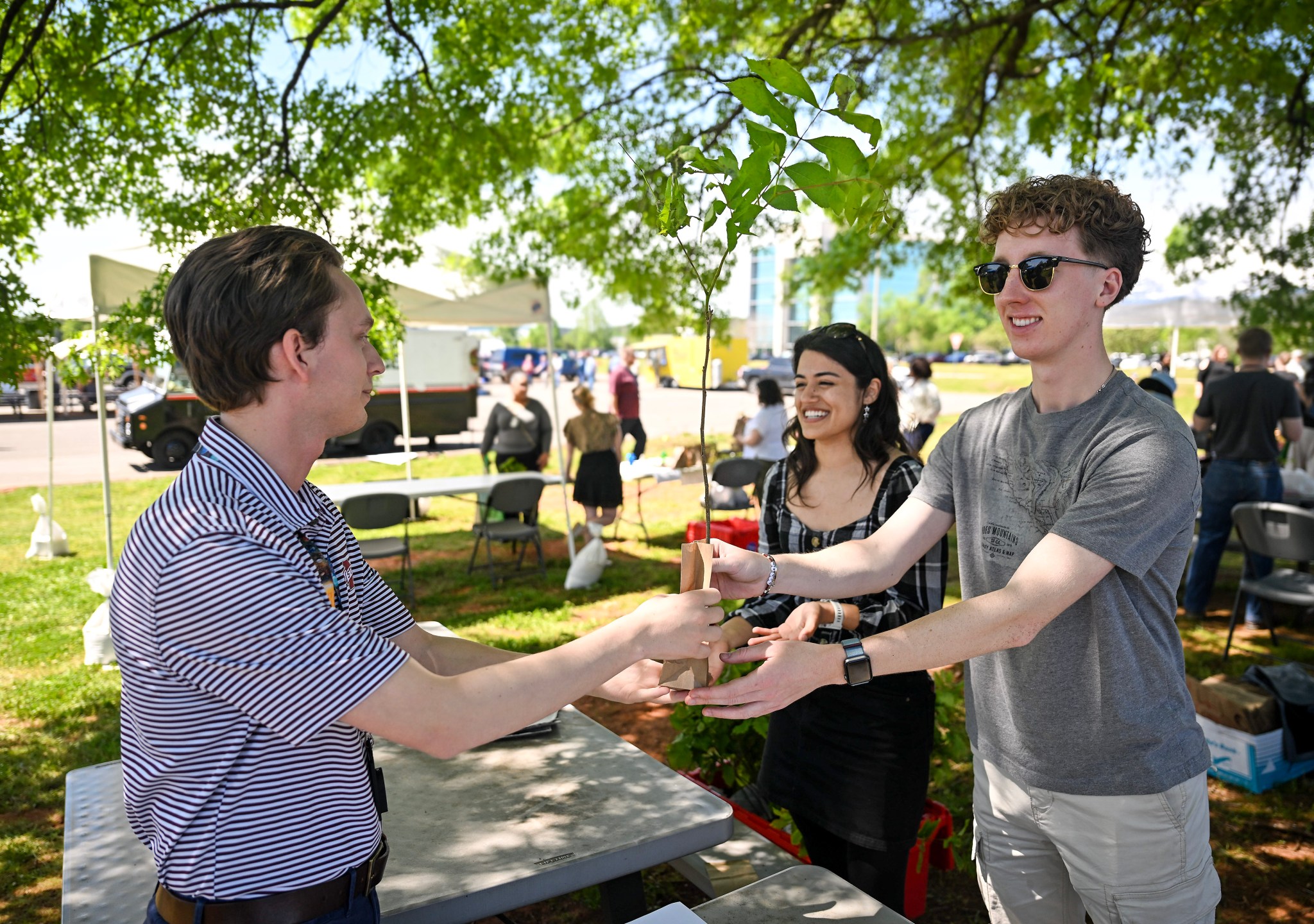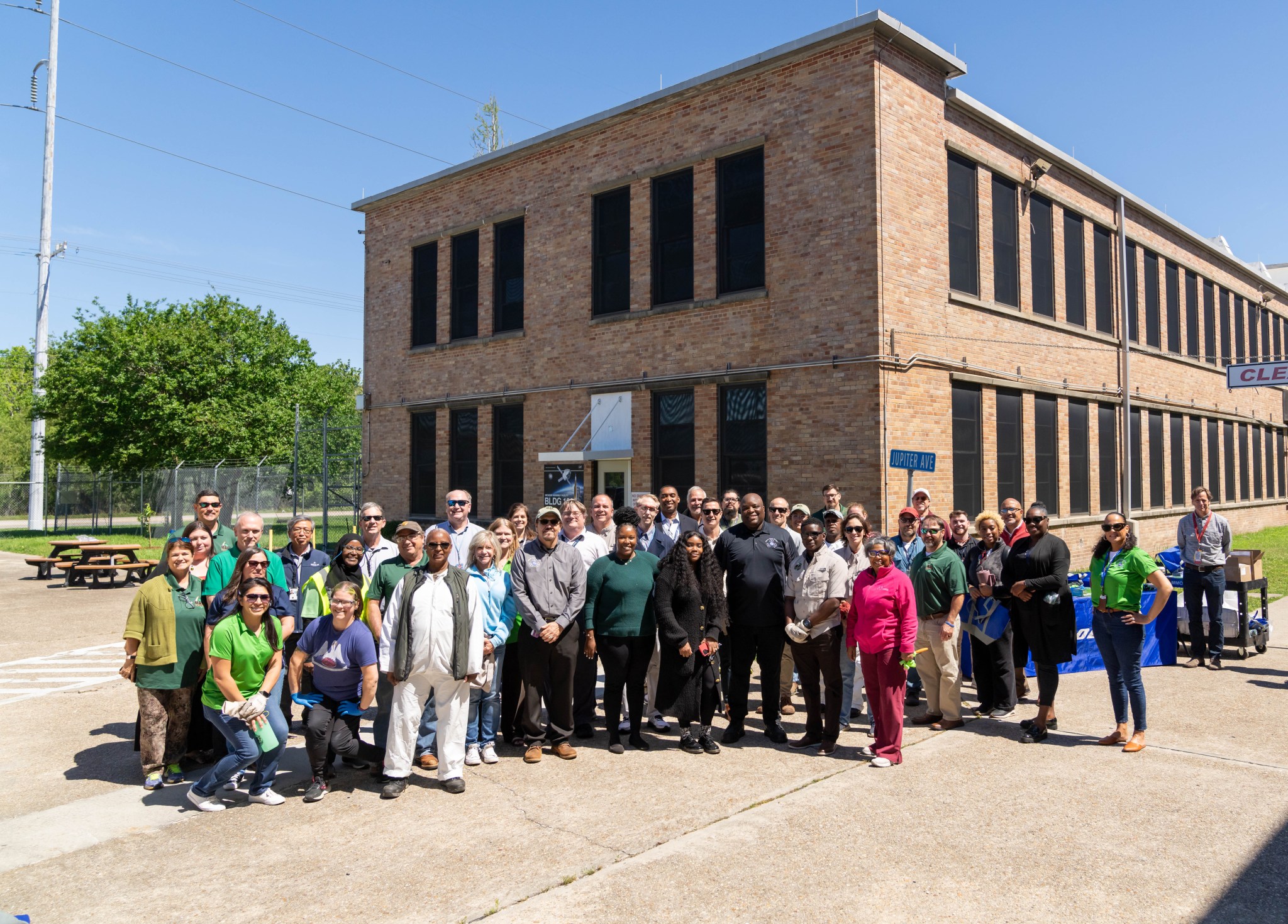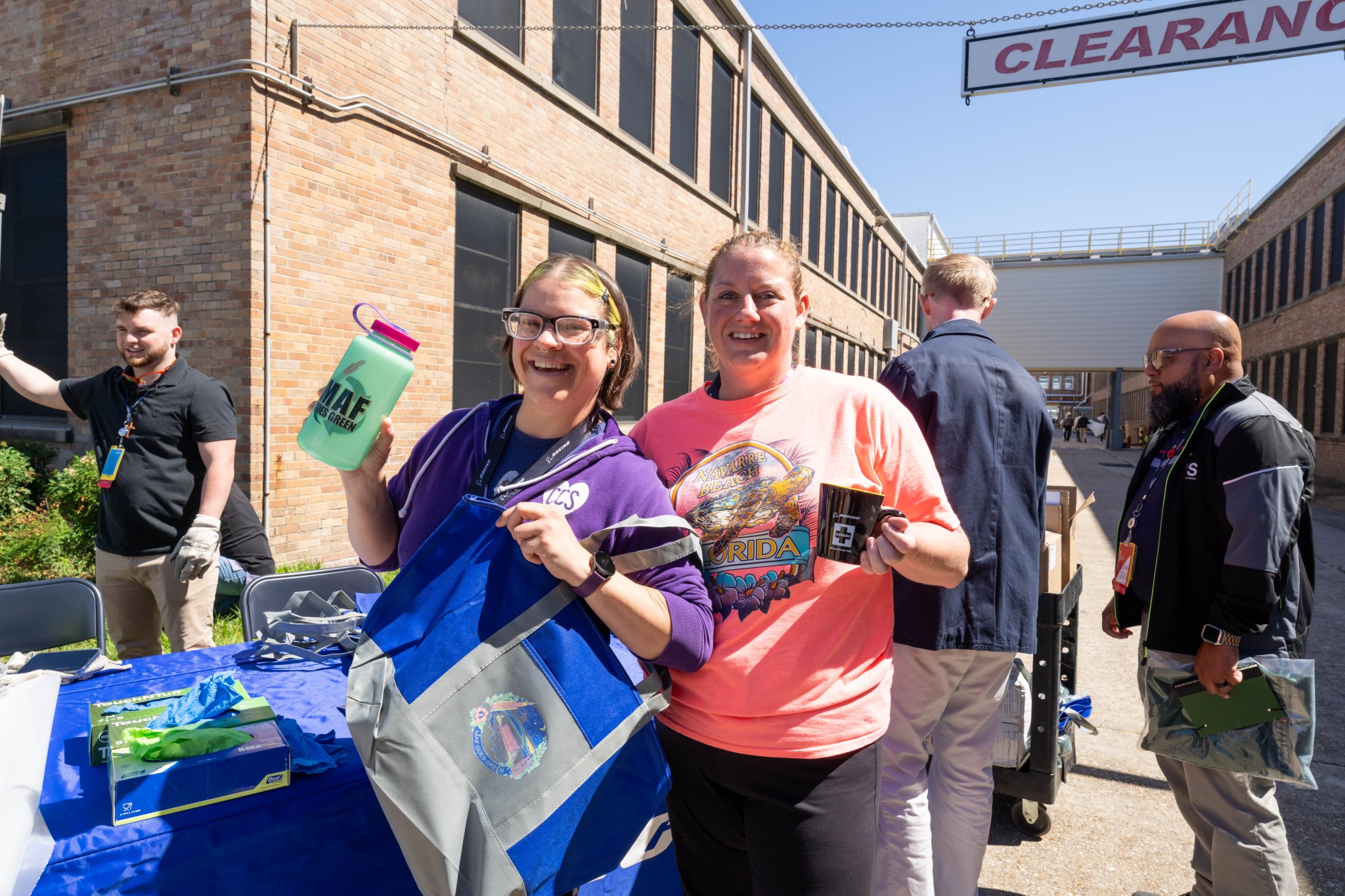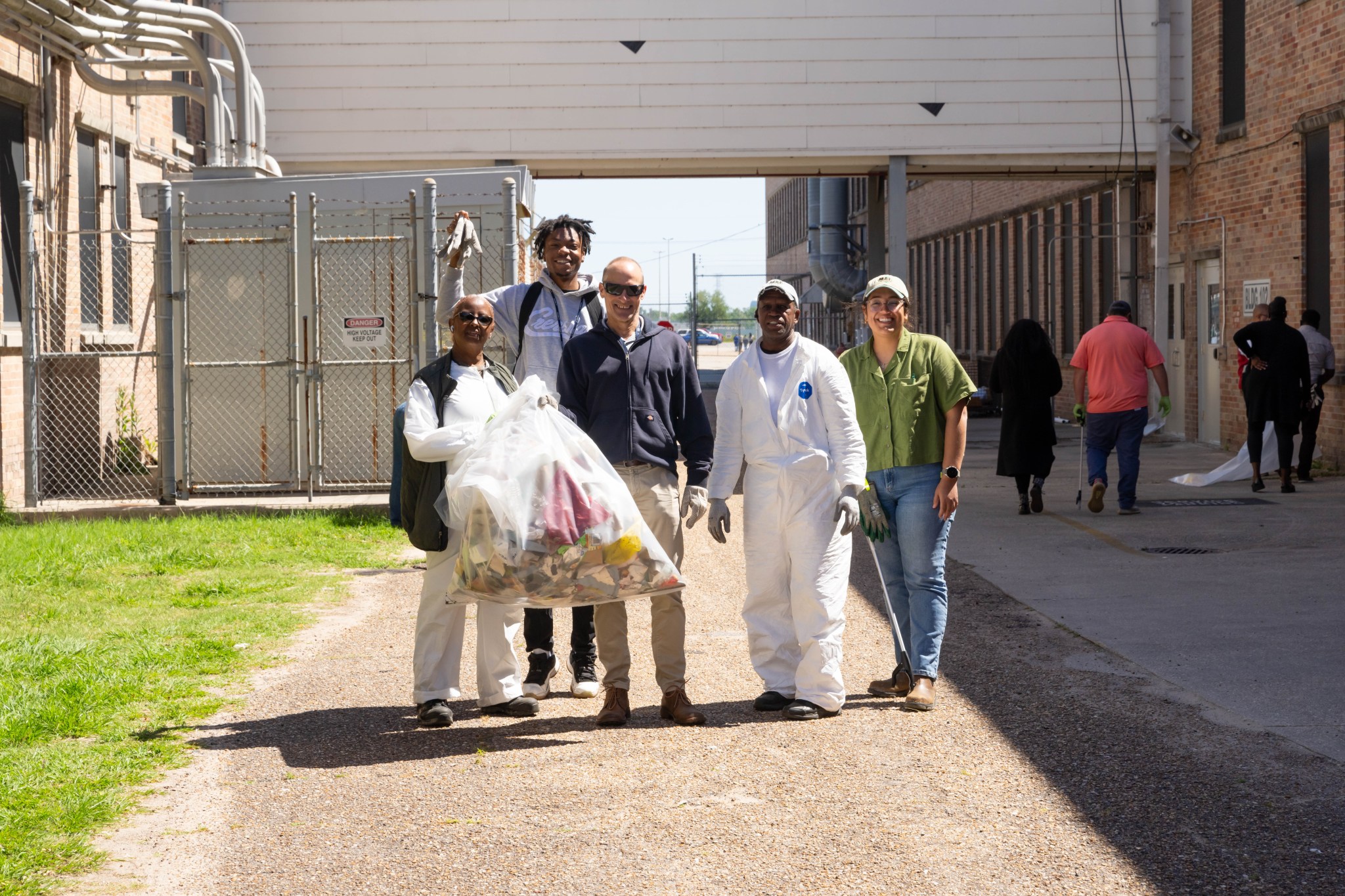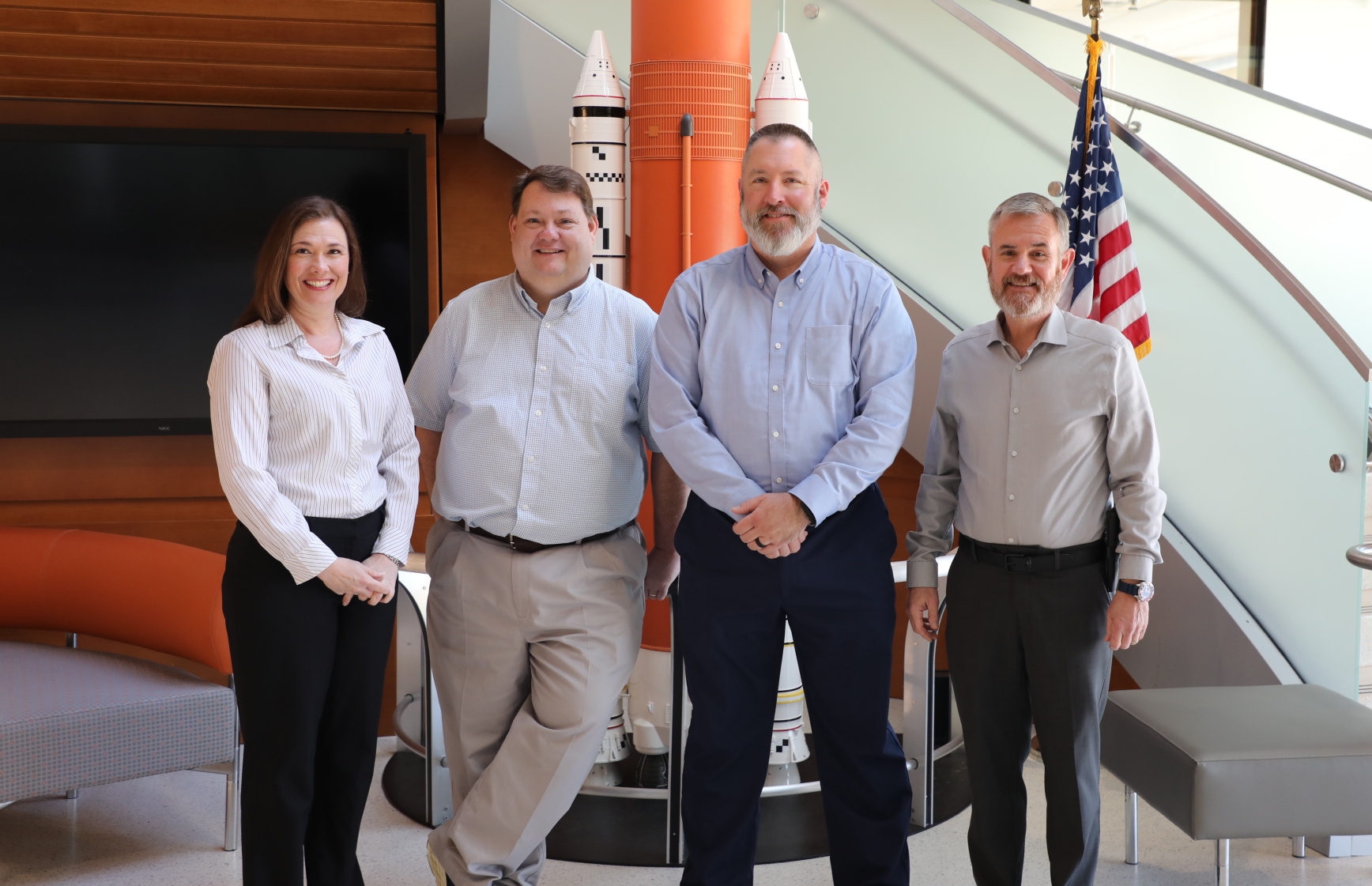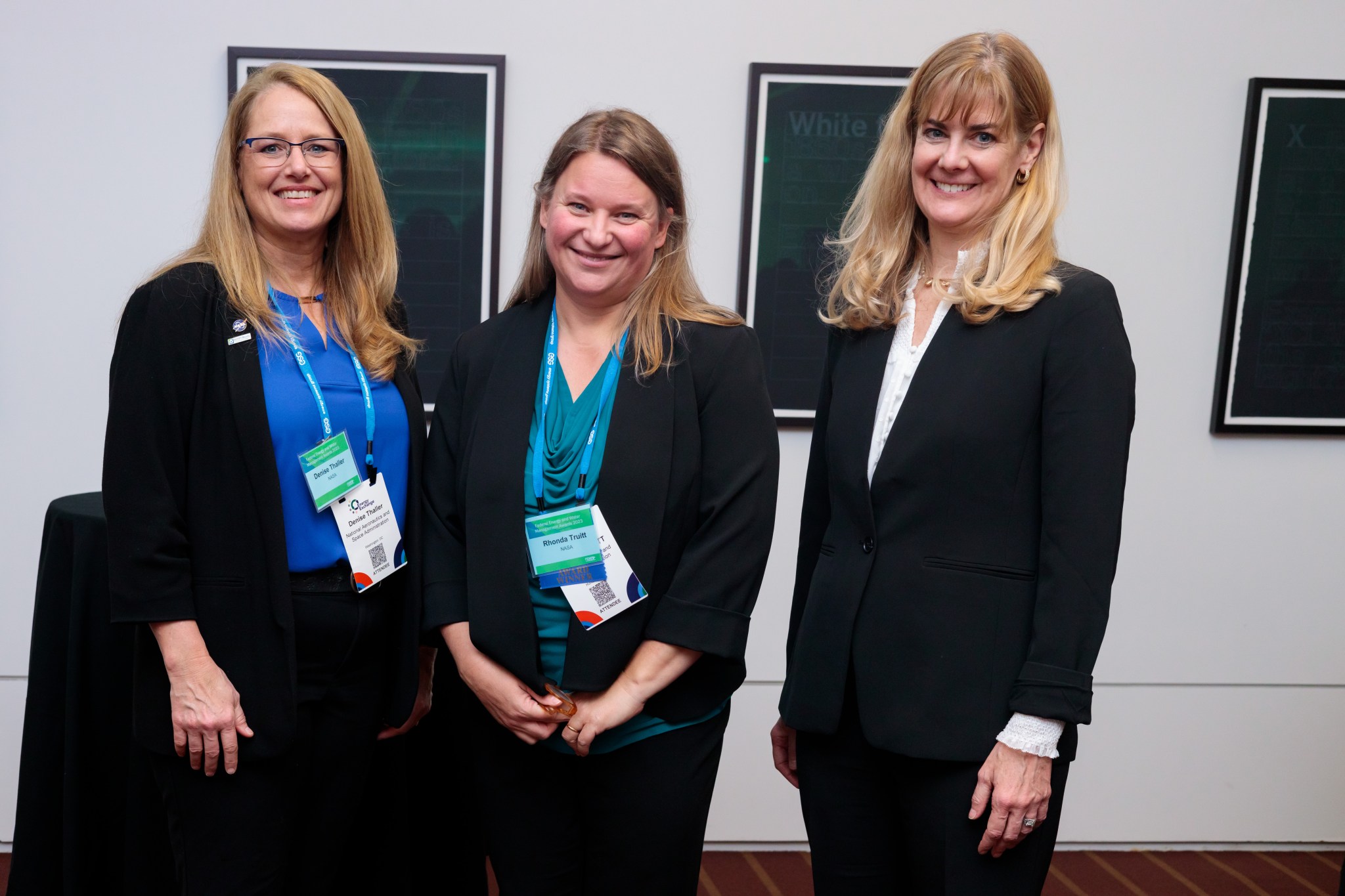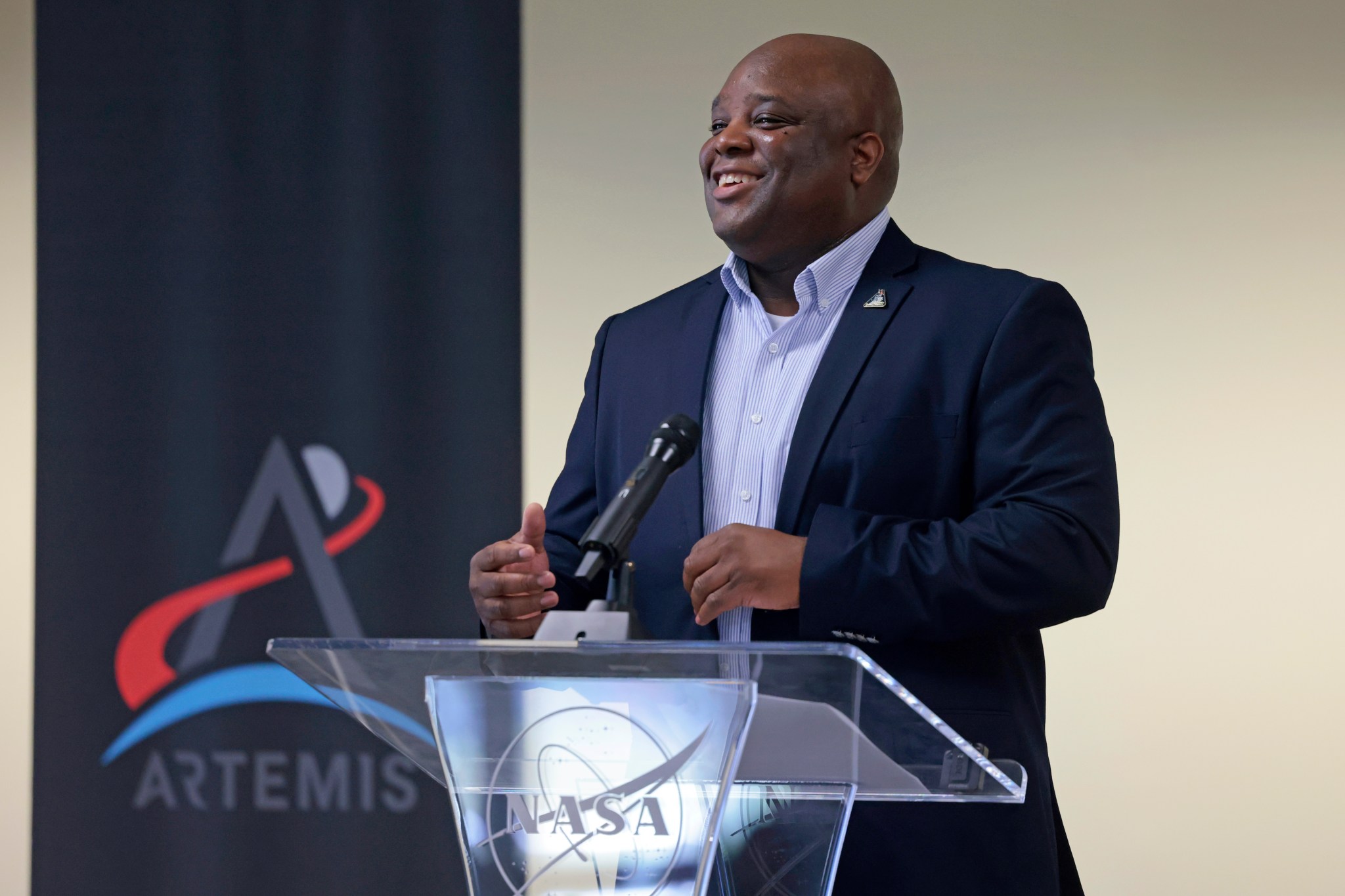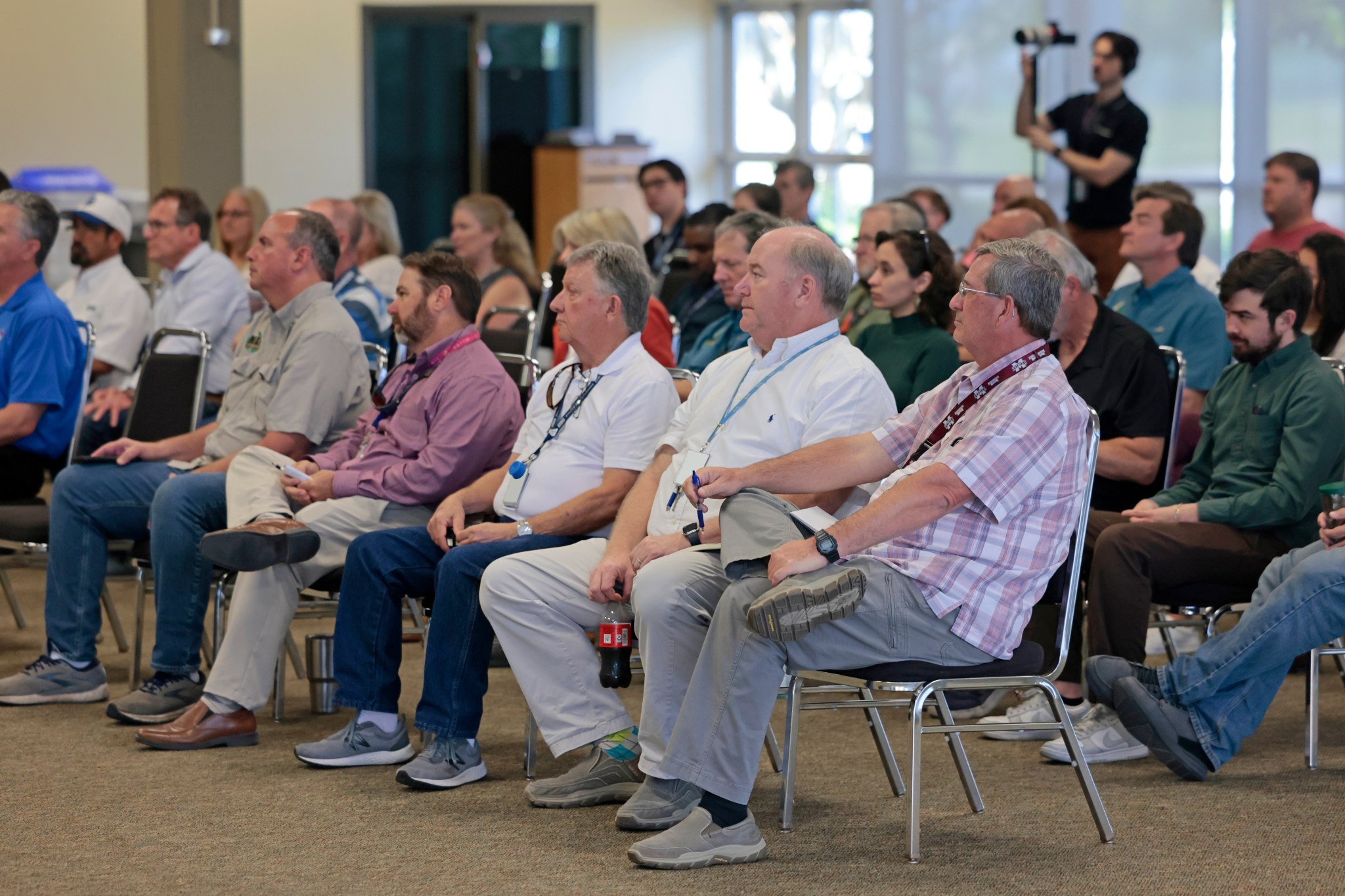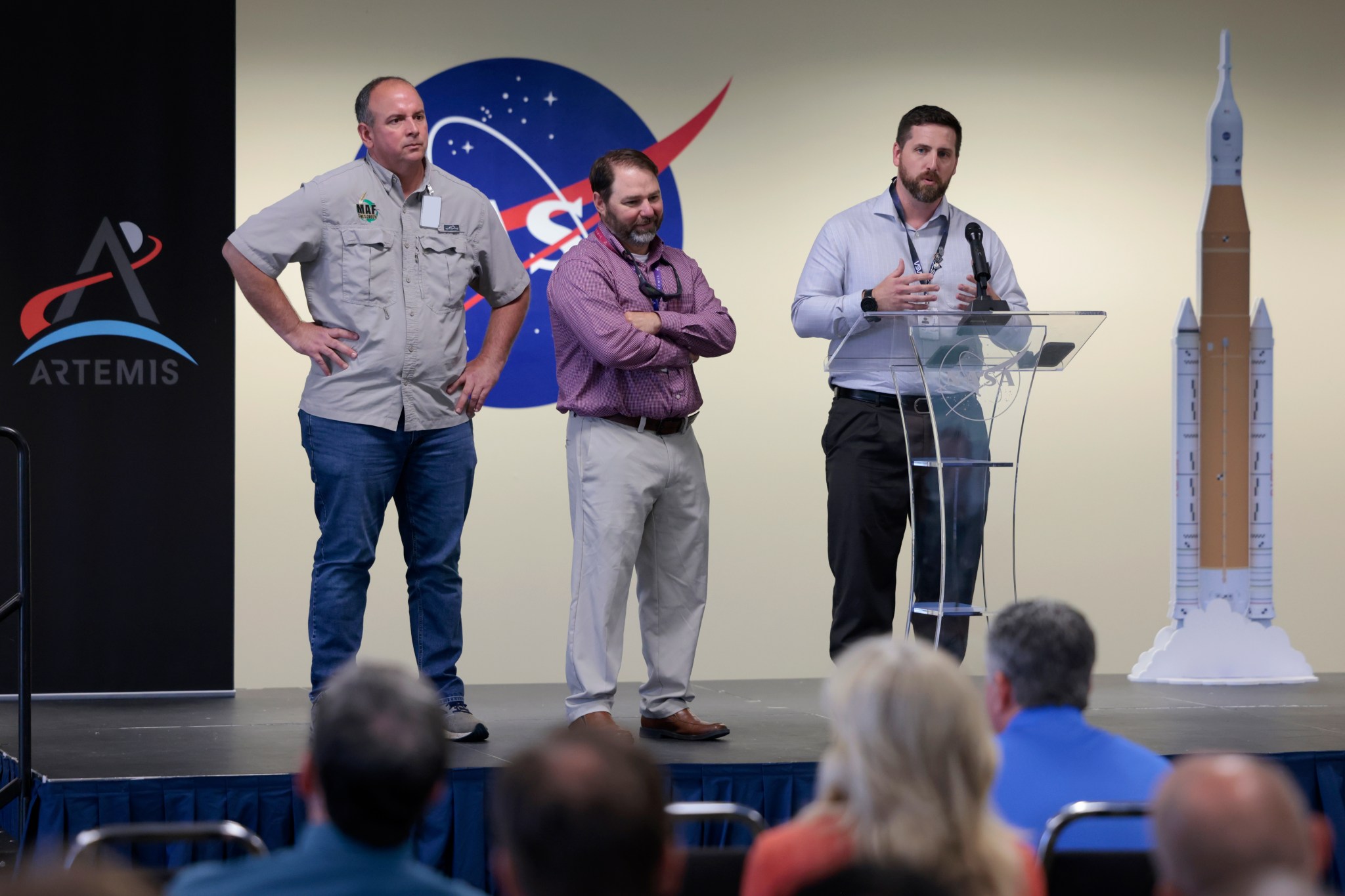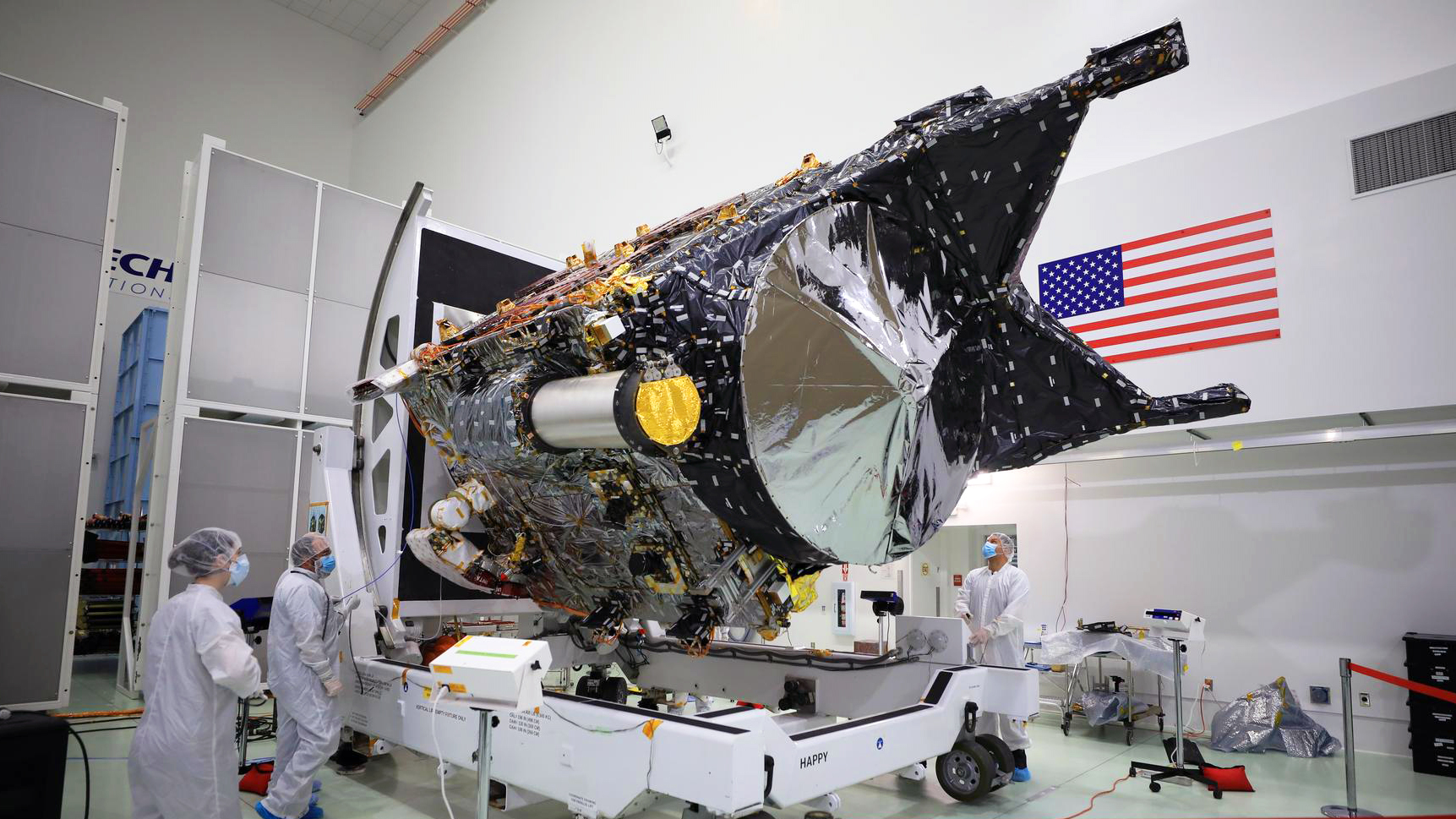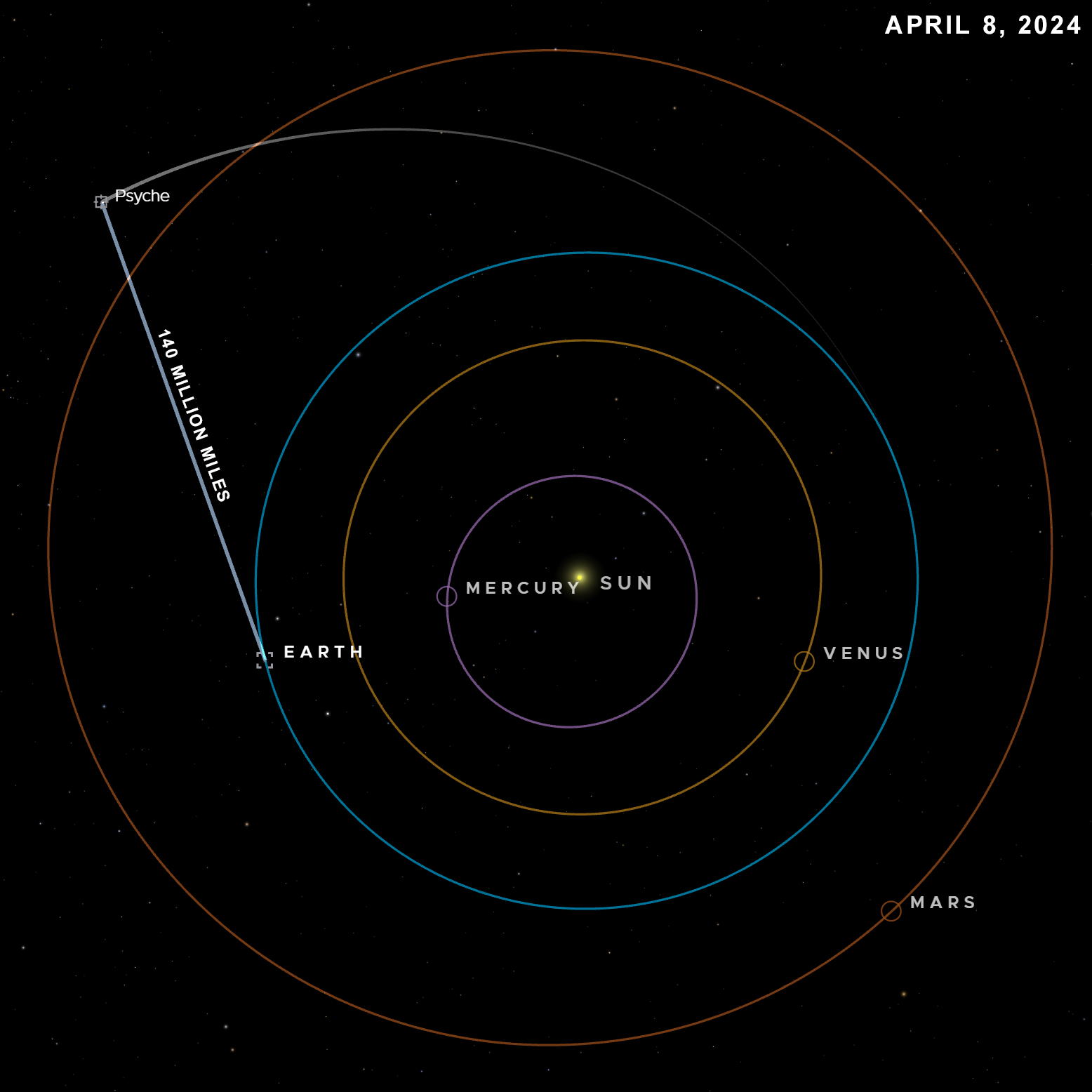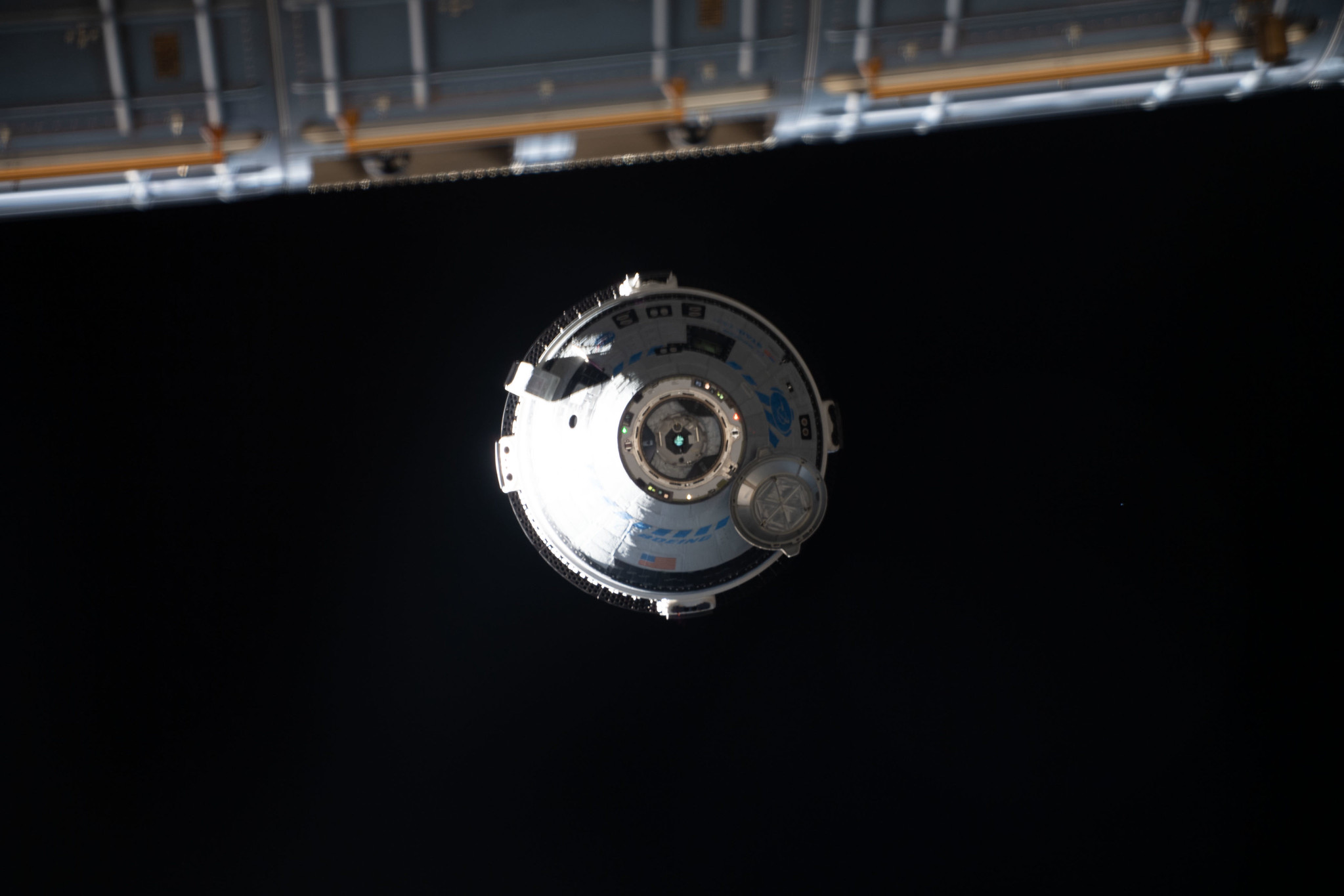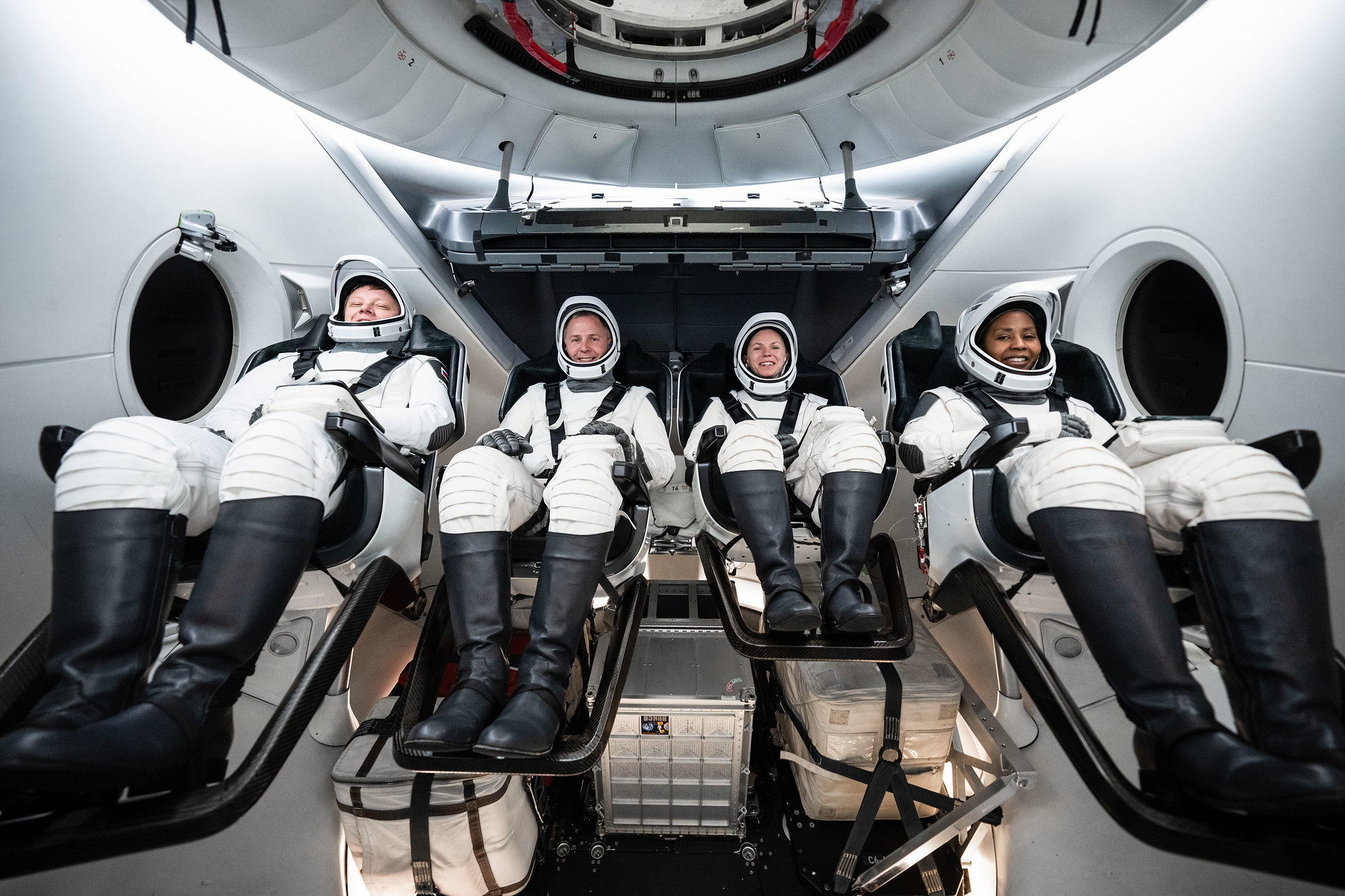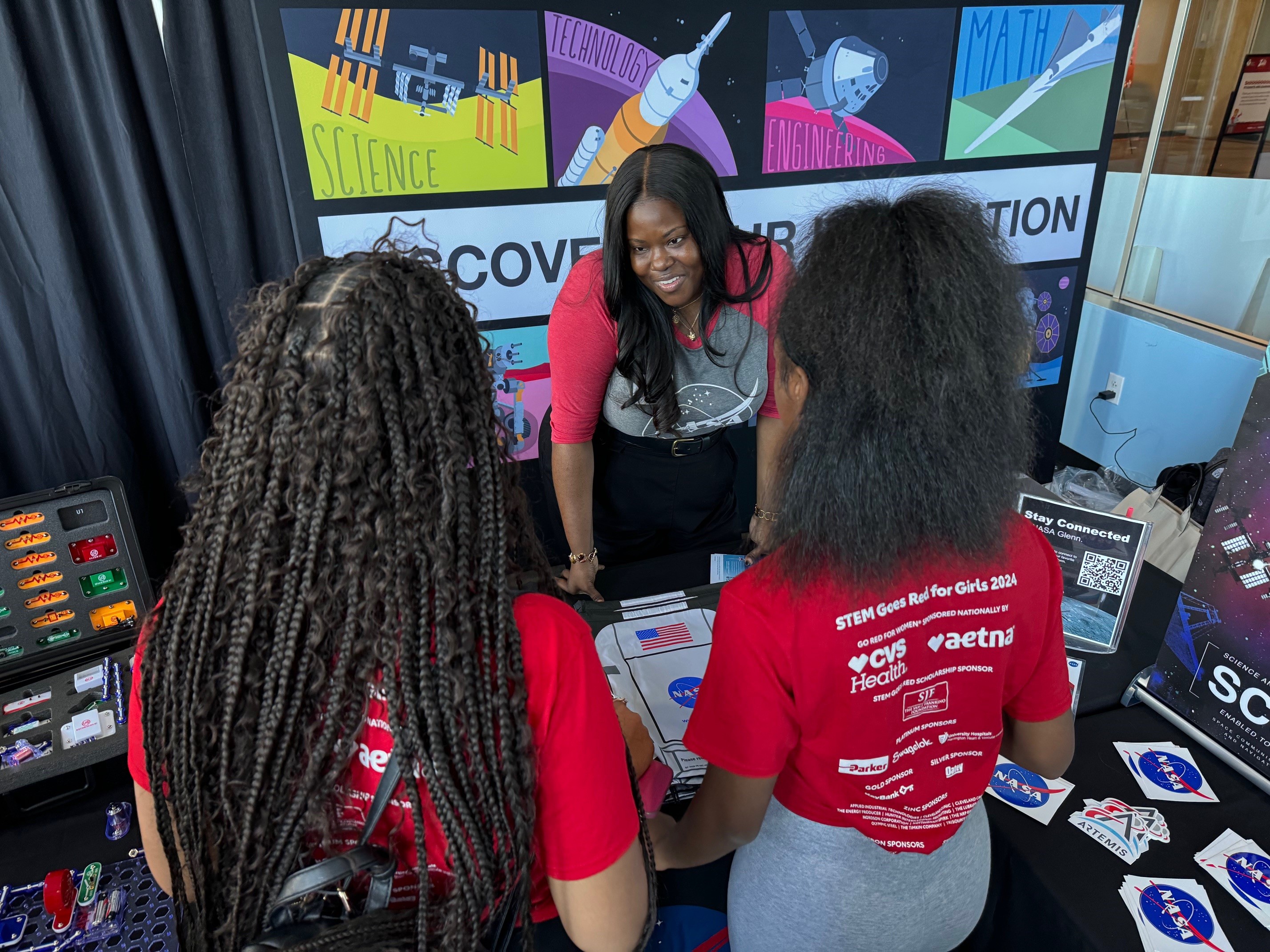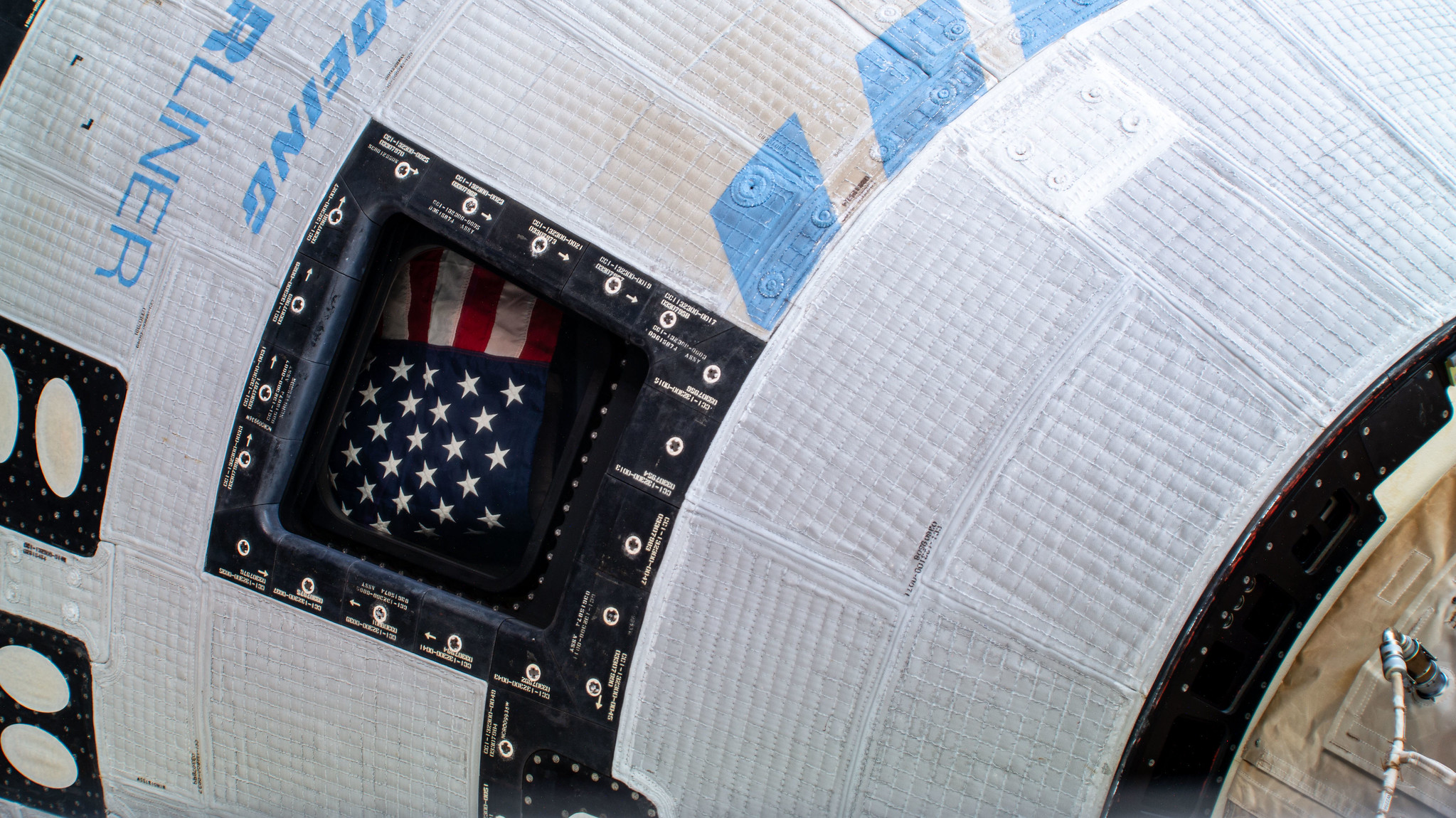The Marshall Star for May 1, 2024
Marshall Prepares for Strategic Facilities Updates NASA’s Marshall Space Flight Center is getting ready for the next big step in the evolution of its main campus. Through a series of multi-year infrastructure projects, Marshall is optimizing its footprint to assure its place as a vibrant and vital hub for the aerospace community in the next […]
The Marshall Star for May 1, 2024

Marshall Prepares for Strategic Facilities Updates
NASA’s Marshall Space Flight Center is getting ready for the next big step in the evolution of its main campus. Through a series of multi-year infrastructure projects, Marshall is optimizing its footprint to assure its place as a vibrant and vital hub for the aerospace community in the next era.
Near-term plans call for the carefully orchestrated take-down of 19 obsolete and idle structures – among them the 363-foot-tall Dynamic Test Stand, the Propulsion and Structural Test Facility, and Neutral Buoyancy Simulator. These facilities are not required for current or future missions, and the demolitions will help the center transition to a more modern, sustainable, and affordable infrastructure.
“These facilities helped NASA make history – the Dynamic Test Stand was the tallest manmade structure in North Alabama and helped us test both the Saturn V rocket and the space shuttle,” said Joseph Pelfrey, Marshall’s center director. “Without these structures, we wouldn’t have the space program we have today. While it is hard to let them go, the most important legacy remaining are the people that built and stewarded these facilities and the missions they enabled. That same bold spirit fuels us, today. We are committed to carrying it forward to inspire the workforce of tomorrow.”
Built in 1964, the Dynamic Test Stand initially was used to test fully assembled Saturn V rockets. In 1978, engineers there also integrated all space shuttle elements for the first time, including the orbiter, external fuel tank, and solid rocket boosters.
The Propulsion and Structural Test Facility – better known at Marshall as the “T-tower” due to its unique shape – was built in 1957 by the U.S. Army Ballistic Missile Agency and transferred to NASA when Marshall was founded in 1960. There, engineers tested components of the Saturn launch vehicles, the Army’s Redstone Rocket, and shuttle solid rocket boosters.
The Neutral Buoyancy Simulator, including its 1.3-million-gallon tank and control room, was built in the late 1960s. From 1969 until its closing in 1997, the facility enabled NASA astronauts and researchers to experience near-weightlessness, conducting underwater testing of space hardware and practice runs for servicing the Hubble Space Telescope. It was replaced in 1997 by a new facility at NASA’s Johnson Space Center.
Honoring the Past, Building the Future
Marshall master planner Justin Taylor said the facilities team looked at every possibility for refurbishing the old sites.
“The upkeep of aging facilities is costly, and we have to put our funding where it does the most good for NASA’s mission,” he said. “These are tough choices, but we have to prioritize function and cost over nostalgia. We’re making way for what’s next.”
To preserve NASA history, the agency has worked with architectural historians over the years on detailed drawings, written histories, and large-format photographs of the sites. Those documents are part of the Library of Congress’s permanent Historic American Engineering Record collection, making their history and accomplishments available to the public for generations to come.
Marshall facilities engineers are still finalizing the details and timeline for the demolitions. Work is expected to begin in late 2024 and end in late 2025. Additionally, to support the center’s employees and all the mission work they are doing, Marshall has a few infrastructure projects in design stages that will include the construction of two state-of-the-art buildings within the decade ahead.
A new Marshall Exploration Facility will offer a two to three story facility at approximately 55,000 square feet located within the 4200 complex. The facility will include an auditorium, along with conferencing, training, retail, and administrative spaces. The new Engineering Science Lab – at approximately 140,000 square feet – will provide a modern, flexible laboratory environment to accommodate a new focus for research and testing capabilities.
Ultimately, NASA’s vision for Marshall is a dynamic, interconnected campus. The center’s master plan features a central greenway connecting its two most densely populated zones – its administrative complex and engineering complex.
“As we look towards the aspirational goals we have as an agency, Marshall’s contributions may look different than our past but be no less important,” said Pelfrey. “And we want our partners, employees, and the community to be part of the evolution with us, bringing complementary skills and capabilities, innovative ideas, and a passion for exploration and discovery.”
Center Helps Grow Team Redstone’s Green Canopy for Earth Day
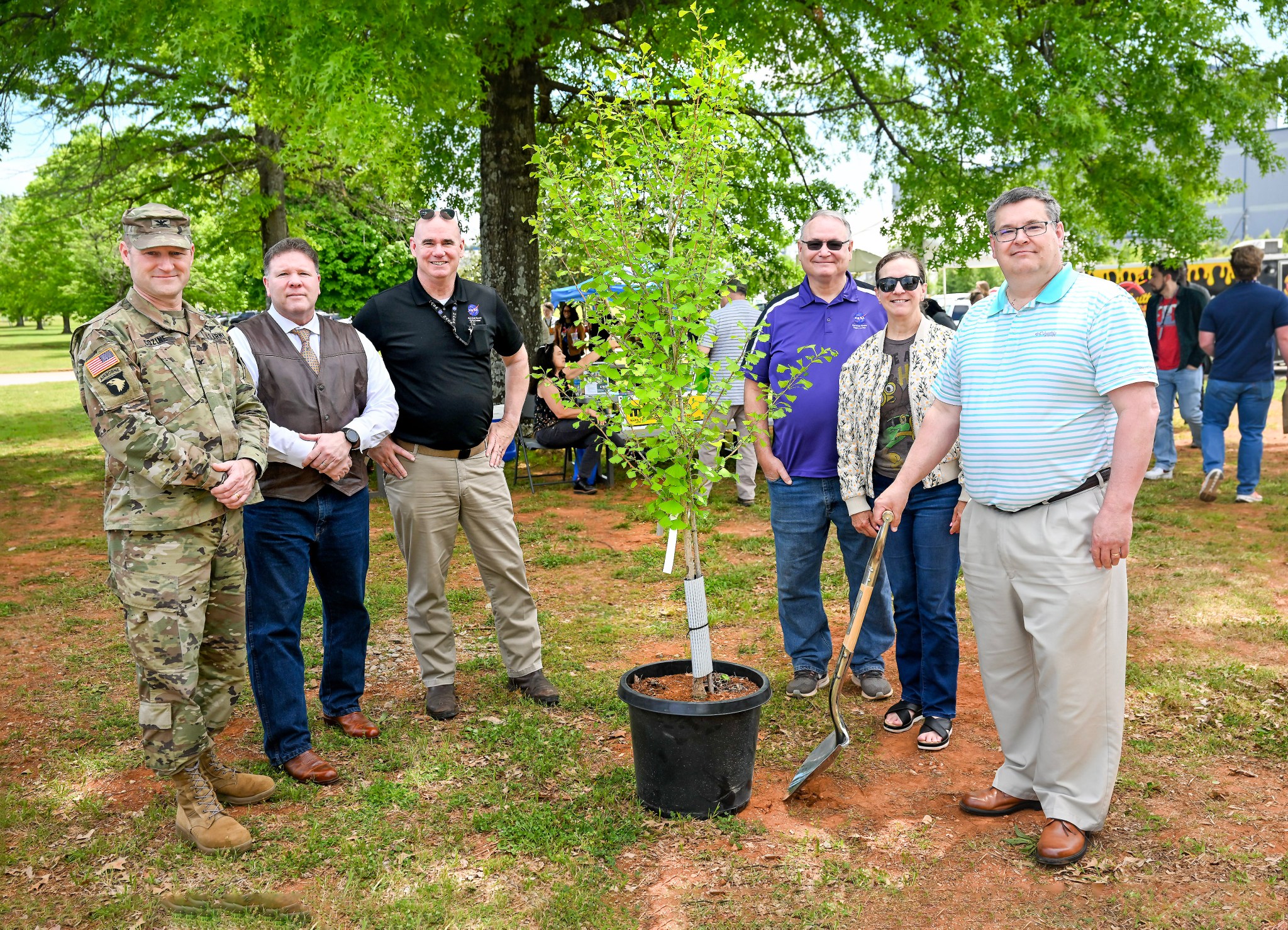
Michoud Workforce ‘Goes Green’ in Celebration of Earth Day
Team members at NASA’s Michoud Assembly Facility marked Earth Day 2024 on April 22 by planting satsuma trees and small plants near administrative and office buildings.
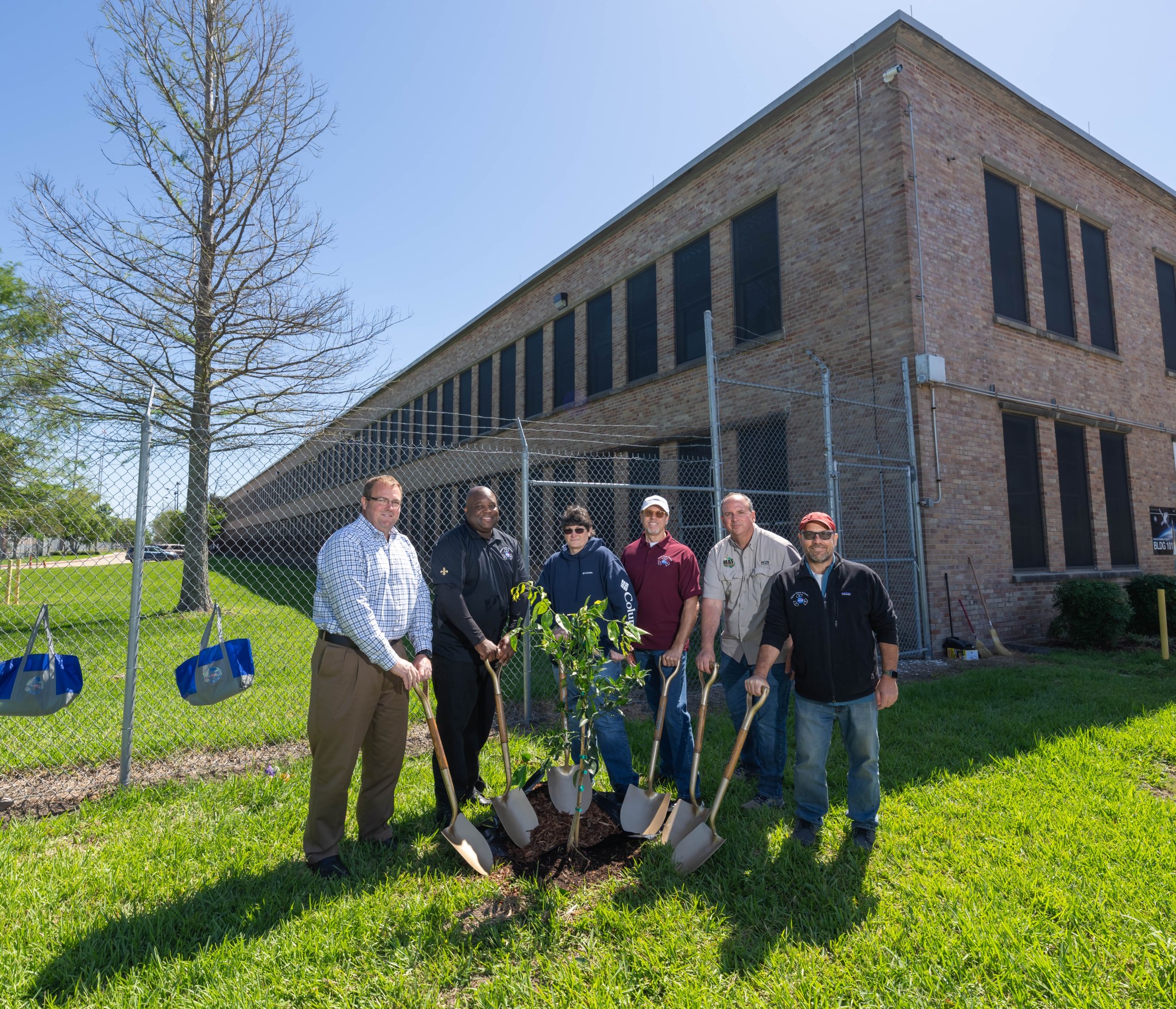
Nearly 50 employees from NASA, Boeing, Lockheed Martin, Syncom Space Services (S3), Textron, and various other contractors worked together to weed flower beds and pick up litter and debris around the 829-acre site on Earth Day.
“The Earth Day activities this morning were not only good for the environment, but also good for our workforce,” said Michoud Director Hansel Gill, “It was a pleasure to see folks from various contractors and tenants come together, get their hands dirty, and enjoy the comradery. Everyone was smiling, the weather was perfect, morale was high, and we look forward to hosting more opportunities such as this in the future.”
Export Control Office Keeps Marshall Safe and Secure When Sharing Knowledge
By Jessica Barnett
As a team member at NASA’s Marshall Space Flight Center, it’s your responsibility to help make sure information doesn’t fall into the wrong hands. That includes checking in with the center’s Export Control Office before a presentation or visit with foreign nationals or entities.
Marshall’s Export Control Program features four staff members and a multitude of certified Center Export Representatives (CERs) who will work with team members to ensure organizations can get their work done without violating export control laws.
“We’re a service organization with a mission to help NASA employees navigate the very complex world of export controls,” said Sean Benson, who serves as Marshall’s center export administrator. “They’re laws that all U.S. entities – government included – must follow. Our role is to help the exporter navigate those in an efficient and compliant way.”
It’s important to note that exports aren’t just physical goods being shipped overseas. They can include items shared virtually with foreign companies, visits from foreign nationals, presentations with non-U.S. schools or universities, and more.
“I often get asked to review presentations for export control content,” said Elizabeth Ewald, senior export compliance specialist at Marshall. “I also help with international shipping.”
“We review if NASA’s going to be disposing of property, selling it out to markets. We make sure that if it’s going, it’s going to the proper parties,” Benson said. “We also do a lot of work with foreign national visits. We do risk assessment for every foreign national visit that comes from Marshall Space Flight Center, including Michoud Assembly Facility and the National Space Science Technology Center.”
CERs play an important role in the process. Benson and Ewald advise each technical organization at Marshall to have at least one CER.
“They’re our eyes, ears, hands, and feet on the ground within the individual areas of the center,” Ewald said. “They speak engineering, and we don’t; we speak export, and they don’t. Together, we make a great team to help when reviewing papers, presentations, and what-have-you.”
To become a CER, a team member must complete 10 prerequisite courses in SATERN, then complete two live Teams sessions, which are four hours each. Once certified, they’ll need to complete annual recertification to remain on the office’s active CERs list.
That list is just one of the many tools available for team members who visit the office’s SharePoint page on Inside Marshall. The page also features contact information for the office’s staff members, ways to file a request for export authorization or policy review, and access to the International Traffic in Arms Regulations (ITAR) and Export Administration Regulations (EAR), which are the two rulebooks that govern the Export Control Program.
“You can request training, too,” Benson said. “You can also see our reference materials, including some helpful job aids for things like marking Controlled Unclassified Information (CUI) documents.”
Each NASA center has its own Export Control Program to match that center’s focus. Benson said he’s proud to work at Marshall, where – in the words of Center Director Joseph Pelfrey – he can work on a rocket that’s going to the Moon in the morning and on a rocket that’s coming back from Mars in the afternoon.
“The best part of my job is being involved with helping programs and projects work with their national partners to do cool stuff in space,” Benson said. “I never thought that I would be involved in things like helping people get satellites from one place to another and safely to a launchpad.”
“We’re here to help,” Ewald said. “We want you guys to be able to do what you want to do, so get us involved. Sometimes the things we need to help you with will take more than 90 days to accomplish, so the sooner you get us involved, the better.”
Team members can learn more about Marshall’s Export Control Office by visiting its SharePoint page on Inside Marshall. Organizations can also reach out to the office to request a training or presentation tailored to that organization’s specific export control needs.
Barnett, a Media Fusion employee, supports the Marshall Office of Communications.
Marshall’s Energy and Water Team Wins Federal Energy Management Program Award
By Celine Smith
It’s easy to see the green pastures and rolling hills surrounding NASA’s Marshall Space Flight Center on Redstone Arsenal and think of them as untouched.
In reality, the energy and water team within Marshall’s Center of Operations Office takes great care in managing the sustainable use of the environment. Not only does their work benefit the environment, but their commitment to decrease the usage of water and energy can save taxpayer’s money. The team was recently rewarded for their efforts, earning an award March 27 from the Federal Energy Management Program for their project: water leak detection and advanced metering infrastructure.
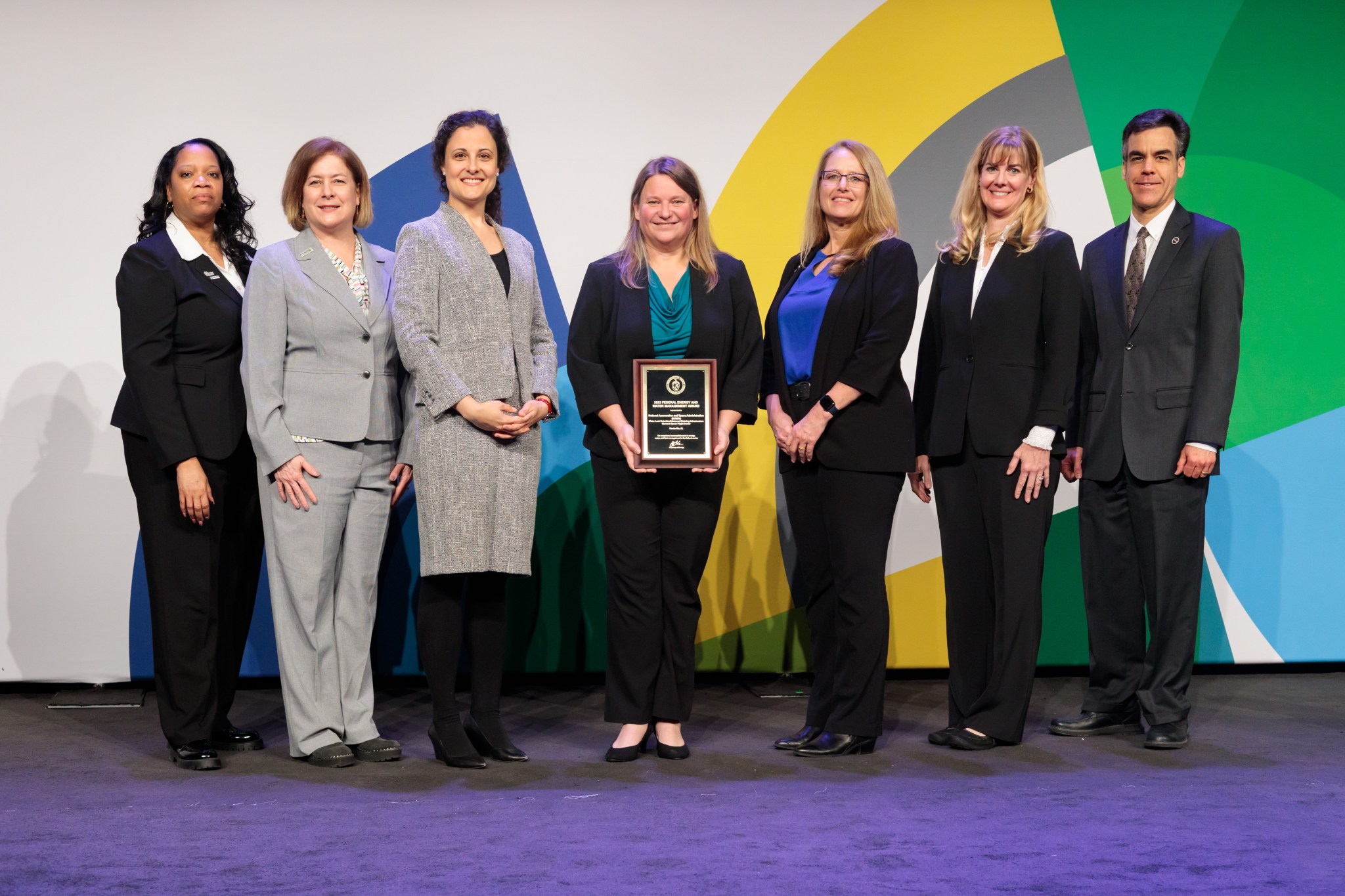
“I love saving energy and money for the taxpayer,” said Rhonda Truitt, the energy and water manager for Marshall. “I also feel like it’s the right thing to do as a good steward of our planet and for our community.”
The team ensures the center meets and exceeds federal expectations of efficient usage of energy and water. With this objective in mind, it implements innovative methods to conserve resources. The energy and water team partnered with the Army and Huntsville Utilities for the two projects.
For the water leak detection project, a team comprised of Truitt, Marshall’s Operation & Maintenance, and the SMART center initiative, placed acoustic sensors mimicking hydrant caps on hydrants across Marshall. The sensor monitors irregular sounds that indicate a leak and identifies its approximate location, decreasing the time needed in what was previously an hours-long process to find leaks.
Truitt said the technology has more benefits other than saving money. Fixing leaks prevents clean water from being contaminated by historical industrial operations and flowing into natural water resources like the Tennessee River. Leaks can also cause sinkholes that could endanger team members and buildings, so discovering them early is important.
For example, the team discovered three leaks the first day the project was put into place. A hole causing one leak measured at one-sixteenth of an inch and was leaking 900 gallons of water a day. The sensors have led to four leaks being repaired, with about $10,000 saved for each.
“Small things can make a difference,” Truitt said. “With the number of employees at Marshall, small actions like allowing a leak or drip to go unreported can add up.”
The advanced metering infrastructure works together with water leak detection by calculating how much water used across the center. The energy and water team can ensure Marshall is accurately charged for water and keep track of overall water usage. The success of the two projects won’t only benefit Huntsville. According to Truitt, federal sites across the U.S. could adopt these methods, leading to water and money savings nationwide.
“My role doesn’t only make a difference financially, I get to support NASA’s missions while sustaining and protecting the world we live in,” Truitt said. “It’s really cool to feel like you make short-term and long-term differences.”
Smith, a Media Fusion employee, supports the Marshall Office of Communications.
Michoud All-Hands Provides Updates, Introductions to New Leadership and Initiatives
NASA’s Michoud Assembly Facility Director Hansel Gill held a Michoud All-Hands meeting for facility team members April 24.
The meeting was the first formal all-hands for Gill since officially taking on his new role earlier in the month.
Michoud civil servants and direct support employees attended the event, which included updates on hardware production and infrastructure improvements and repairs, as well as discussions on Michoud’s culture.
Gill then introduced the “MAF Ambassadors” from NASA Marshall Space Flight Center’s Center Action Team to speak on NASA 2040 and other future initiatives before opening the floor to questions.
NASA’s Optical Comms Demo Transmits Data Over 140 Million Miles
Riding aboard NASA’s Psyche spacecraft, the agency’s Deep Space Optical Communications technology demonstration continues to break records. While the asteroid-bound spacecraft doesn’t rely on optical communications to send data, the new technology has proven that it’s up to the task. After interfacing with the Psyche’s radio frequency transmitter, the laser communications demo sent a copy of engineering data from over 140 million miles away, 1½ times the distance between Earth and the Sun.
This achievement provides a glimpse into how spacecraft could use optical communications in the future, enabling higher-data-rate communications of complex scientific information as well as high-definition imagery and video in support of humanity’s next giant leap: sending humans to Mars.
“We downlinked about 10 minutes of duplicated spacecraft data during a pass on April 8,” said Meera Srinivasan, the project’s operations lead at NASA’s Jet Propulsion Laboratory. “Until then, we’d been sending test and diagnostic data in our downlinks from Psyche. This represents a significant milestone for the project by showing how optical communications can interface with a spacecraft’s radio frequency comms system.”
The laser communications technology in this demo is designed to transmit data from deep space at rates 10 to 100 times faster than the state-of-the-art radio frequency systems used by deep space missions today.
After launching on Oct. 13, 2023, the spacecraft remains healthy and stable as it journeys to the main asteroid belt between Mars and Jupiter to visit the asteroid Psyche.
NASA’s optical communications demonstration has shown that it can transmit test data at a maximum rate of 267 megabits per second (Mbps) from the flight laser transceiver’s near-infrared downlink laser – a bit rate comparable to broadband internet download speeds.
That was achieved on Dec. 11, 2023, when the experiment beamed a 15-second ultra-high-definition video to Earth from 19 million miles away (31 million kilometers, or about 80 times the Earth-Moon distance). The video, along with other test data, including digital versions of Arizona State University’s Psyche Inspired artwork, had been loaded onto the flight laser transceiver before Psyche launched last year.
Now that the spacecraft is more than seven times farther away, the rate at which it can send and receive data is reduced, as expected. During the April 8 test, the spacecraft transmitted test data at a maximum rate of 25 Mbps, which far surpasses the project’s goal of proving at least 1 Mbps was possible at that distance.
The project team also commanded the transceiver to transmit Psyche-generated data optically. While Psyche was transmitting data over its radio frequency channel to NASA’s Deep Space Network (DSN), the optical communications system simultaneously transmitted a portion of the same data to the Hale Telescope at Caltech’s Palomar Observatory in San Diego County, California – the tech demo’s primary downlink ground station.
“After receiving the data from the DSN and Palomar, we verified the optically downlinked data at JPL,” said Ken Andrews, project flight operations lead at JPL. “It was a small amount of data downlinked over a short time frame, but the fact we’re doing this now has surpassed all of our expectations.”
After Psyche launched, the optical communications demo was initially used to downlink pre-loaded data, including the Taters the cat video. Since then, the project has proven that the transceiver can receive data from the high-power uplink laser at JPL’s Table Mountain facility, near Wrightwood, California. Data can even be sent to the transceiver and then downlinked back to Earth on the same night, as the project proved in a recent “turnaround experiment.”
This experiment relayed test data – as well as digital pet photographs – to Psyche and back again, a round trip of up to 280 million miles. It also downlinked large amounts of the tech demo’s own engineering data to study the characteristics of the optical communications link.
“We’ve learned a great deal about how far we can push the system when we do have clear skies, although storms have interrupted operations at both Table Mountain and Palomar on occasion,” said Ryan Rogalin, the project’s receiver electronics lead at JPL. (Whereas radio frequency communications can operate in most weather conditions, optical communications require relatively clear skies to transmit high-bandwidth data.)
JPL recently led an experiment to combine Palomar, the experimental radio frequency-optical antenna at the DSN’s Goldstone Deep Space Communications Complex in Barstow, California, and a detector at Table Mountain to receive the same signal in concert. “Arraying” multiple ground stations to mimic one large receiver can help boost the deep space signal. This strategy can also be useful if one ground station is forced offline due to weather conditions; other stations can still receive the signal.
Managed by JPL, this demonstration is the latest in a series of optical communication experiments funded by the Technology Demonstration Missions (TDM) program under NASA’s Space Technology Mission Directorate and the agency’s SCaN (Space Communications and Navigation) program within the Space Operations Mission Directorate. The Technology Demonstration Missions Program Office is at NASA’s Marshall Space Flight Center. Development of the flight laser transceiver is supported by MIT Lincoln Laboratory, L3 Harris, CACI, First Mode, and Controlled Dynamics Inc., and Fibertek, Coherent, and Dotfast support the ground systems. Some of the technology was developed through NASA’s Small Business Innovation Research program.
Arizona State University leads the Psyche mission. JPL is responsible for the mission’s overall management, system engineering, integration and test, and mission operations. Psyche is the 14th mission selected as part of NASA’s Discovery Program under the Science Mission Directorate, managed by Marshall. NASA’s Launch Services Program, based at the agency’s Kennedy Space Center managed the launch service. Maxar Technologies provided the high-power solar electric propulsion spacecraft chassis from Palo Alto, California.
Read more about the laser communications demo.
Chandra Releases Doubleheader of Blockbuster Hits
New movies of two of the most famous objects in the sky – the Crab Nebula and Cassiopeia A – are being released from NASA’s Chandra X-ray Observatory. Each includes X-ray data collected by Chandra over about two decades. They show dramatic changes in the debris and radiation remaining after the explosion of two massive stars in our galaxy.
The Crab Nebula, the result of a bright supernova explosion seen by Chinese and other astronomers in the year 1054, is 6,500 light-years from Earth. At its center is a neutron star, a super-dense star produced by the supernova. As it rotates at about 30 times per second, its beam of radiation passes over the Earth every orbit, like a cosmic lighthouse.
As the young pulsar slows down, large amounts of energy are injected into its surroundings. In particular, a high-speed wind of matter and anti-matter particles plows into the surrounding nebula, creating a shock wave that forms the expanding ring seen in the movie. Jets from the poles of the pulsar spew X-ray emitting matter and antimatter particles in a direction perpendicular to the ring.
Over 22 years, Chandra has taken many observations of the Crab Nebula. With this long runtime, astronomers see clear changes in both the ring and the jets in the new movie. Previous Chandra movies showed images taken from much shorter time periods – a 5-month period between 2000 and 2001 and over 7 months between 2010 and 2011 for another. The longer timeframe highlights mesmerizing fluctuations, including whip-like variations in the X-ray jet that are only seen in this much longer movie. A new set of Chandra observations will be conducted later this year to follow changes in the jet since the last Chandra data was obtained in early 2022.
The second billing in this doubleheader is just as spectacular. Cassiopeia A (Cas A for short) is the remains of a supernova that is estimated to have exploded about 340 years ago in Earth’s sky. While other Chandra movies of Cas A have previously been released, including one with data extending from 2000 to 2013, this new movie is substantially longer featuring data from 2000 through to 2019.
The outer region of Cas A shows the expanding blast wave of the explosion. The blast wave is composed of shock waves, similar to the sonic booms generated by a supersonic aircraft. These expanding shock waves are sites where particles are being accelerated to energies that are higher than the most powerful accelerator on Earth, the Large Hadron Collider. As the blast wave travels outwards it encounters surrounding material and slows down, generating a second shock wave that travels backwards relative to the blast wave, analogous to a traffic jam travelling backwards from the scene of an accident on a highway.
Cas A has been one of the most highly observed targets and publicly released images from the Chandra mission. It was Chandra’s official first-light image in 1999 after the Space Shuttle Columbia launched into orbit and quickly discovered a point source of X-rays in Cas A’s center for the first time, later confirmed to be a neutron star. Over the years, astronomers have used Chandra to discover evidence for “superfluid” inside Cas A’s neutron star, to reveal that the original massive star may have turned inside out as it exploded and to take an important step in pinpointing how giant stars explode. Chandra has also mapped the elements forged inside the star, which are now moving into space to help seed the next generation of stars and planets. More recently, Chandra data was combined with data from NASA’s James Webb Space Telescope to help determine the origin of mysterious structures within the remnant.
The images used in the latest Cas A movie have been processed using a state-of-the-art processing technique, led by Yusuke from Rikkyo University in Japan, to fully capitalize on Chandra’s sharp X-ray vision. The paper describing their work was published in The Astrophysical Journal and is available online.
These two movies show Chandra’s capabilities of documenting changes in astronomical objects over human timeframes. Such movies would not be possible without Chandra’s archives that serve as public repositories for the data collected over Chandra’s nearly 25 years of operations.
NASA’s Marshall Space Flight Center manages the Chandra program. The Smithsonian Astrophysical Observatory’s Chandra X-ray Center controls science from Cambridge Massachusetts and flight operations from Burlington, Massachusetts.
Read more from NASA’s Chandra X-ray Observatory.
NASA Sets Coverage for Boeing Starliner’s First Crewed Launch, Docking
NASA will provide live coverage of prelaunch and launch activities for the agency’s Boeing Crew Flight Test, which will carry NASA astronauts Butch Wilmore and Suni Williams to and from the International Space Station.
Launch of the ULA (United Launch Alliance) Atlas V rocket and Boeing Starliner spacecraft is targeted for 9:34 p.m. CDT May 6, from Space Launch Complex-41 at Cape Canaveral Space Force Station.
The flight test will carry Wilmore and Williams to the space station for about a week to test the Starliner spacecraft and its subsystems before NASA certifies the transportation system for rotational missions to the orbiting laboratory for the agency’s Commercial Crew Program.
The HOSC (Huntsville Operations Support Center) at NASA’s Marshall Space Flight Center provides engineering and mission operations support for the space station, the Commercial Crew Program, and Artemis missions, as well as science and technology demonstration missions.
Starliner will dock to the forward-facing port of the station’s Harmony module at 11:48 p.m., May 8.
NASA’s mission coverage is as follows (all times Central and subject to change based on real-time operations):
May 3
11:30 a.m. – Prelaunch news conference at Kennedy (no earlier than one hour after completion of the Launch Readiness Review) with the following participants:
- NASA Administrator Bill Nelson
- Steve Stich, manager, NASA’s Commercial Crew Program
- Dana Weigel, manager, NASA’s International Space Station Program
- Emily Nelson, chief flight director, NASA
- Jennifer Buchli, chief scientist, NASA’s International Space Station Program
- Mark Nappi, vice president and program manager, Commercial Crew Program, Boeing
- Gary Wentz, vice president, Government and Commercial Programs, ULA
- Brian Cizek, launch weather officer, 45th Weather Squadron, Cape Canaveral Space Force Station
Coverage of the prelaunch news conference will stream live on NASA+, NASA Television, the NASA app, YouTube, and the agency’s website.
2:30 p.m. – NASA Social panel live stream event at Kennedy with the following participants:
- Ian Kappes, deputy launch vehicle office manager, NASA’s Commercial Crew Program
- Amy Comeau Denker, Starliner associate chief engineer, Boeing
- Caleb Weiss, system engineering and test leader, ULA
- Jennifer Buchli, chief scientist, NASA’s International Space Station Program
Coverage of the panel live stream event will stream live at @NASAKennedy on YouTube, @NASAKennedy on X, and @NASAKennedy on Facebook. Members of the public may ask questions online by posting questions to the YouTube, X, and Facebook livestreams using #AskNASA.
May 6
5:30 p.m. – Launch coverage begins on NASA+, NASA Television, the NASA app, YouTube, and the agency’s website.
9:34 p.m. – Launch
Launch coverage on NASA+ will end shortly after Starliner orbital insertion. NASA Television will provide continuous coverage leading up to docking and through hatch opening and welcome remarks.
All times are estimates and could be adjusted based on operations after launch. Follow the space station blog for the most up-to-date operations information.
NASA will provide a live video feed of Space Launch Complex-41 approximately 48 hours prior to the planned liftoff of the mission. Pending unlikely technical issues, the feed will be uninterrupted until the prelaunch broadcast begins on NASA Television, approximately four hours prior to launch. Once the feed is live, find it here: http://youtube.com/kscnewsroom.
Launch day coverage of the mission will be available on the agency’s website. Coverage will include live streaming and blog updates beginning no earlier than 5:30 p.m., May 6 as the countdown milestones occur. On-demand streaming video and photos of the launch will be available shortly after liftoff.
What's Your Reaction?



















.jpg?#)
























